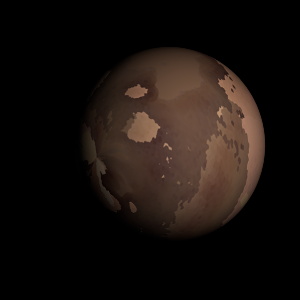|
|
Space Astro
|
Info for exoplanet "Waren"
| Scientific (actual) data |
|---|
| Name | K2-219 d |
| Planet status | Confirmed |
| Radius | 0.23 |
| Orbital period | 11.1373 |
| Inclination | 88.287 |
| Discovered | 2018 |
| Updated | 2021-02-05 |
| Tconj | 2457400 |
| Publication | Published in a refereed paper |
| Detection type | Primary Transit |
| Alternate names | 2MASS J00512286+0852034 d, EPIC 220592745 d, EPIC 220592745.03, TYC 605-518-1 d, WISE J005122.86+085203.1 d |
| Star name | K2-219 |
| Right ascension | 12.85° |
| Declination | 8.87° |
| Mag j | 10.849 |
| Mag h | 10.509 |
| Star distance | 328.42 |
| Star metallicity | 0.13 |
| Star mass | 1.02 |
| Star radius | 1.19 |
| Star temperature | 5753 |
| Star alternate names | 2MASS J00512286+0852034, EPIC 220592745, TYC 605-518-1, WISE J005122.86+085203.1 |
| Wikipedia article | K2-219 d |
Back
| |
| Fictional info (?) |
|---|
| Suggested name | Waren |
| Planet type | Cold planet |
| As seen from K2-219, in a frame of reference that rotates with the orbital motion, it appears to rotate only once every two years.
Because of its fast rotation, the planet's shape is that of an oblate spheroid (it has a slight but noticeable bulge around the equator). |
| Atmosphere | Carbon dioxide | 39% |
| Nitrogen | 38% |
| Sulfur dioxide | 23% |
| Atmospheric pressure | 6 bar |
 |
| No known satellites |
| Google search for Waren |
|
Website by Joachim Michaelis
|
|
|
|